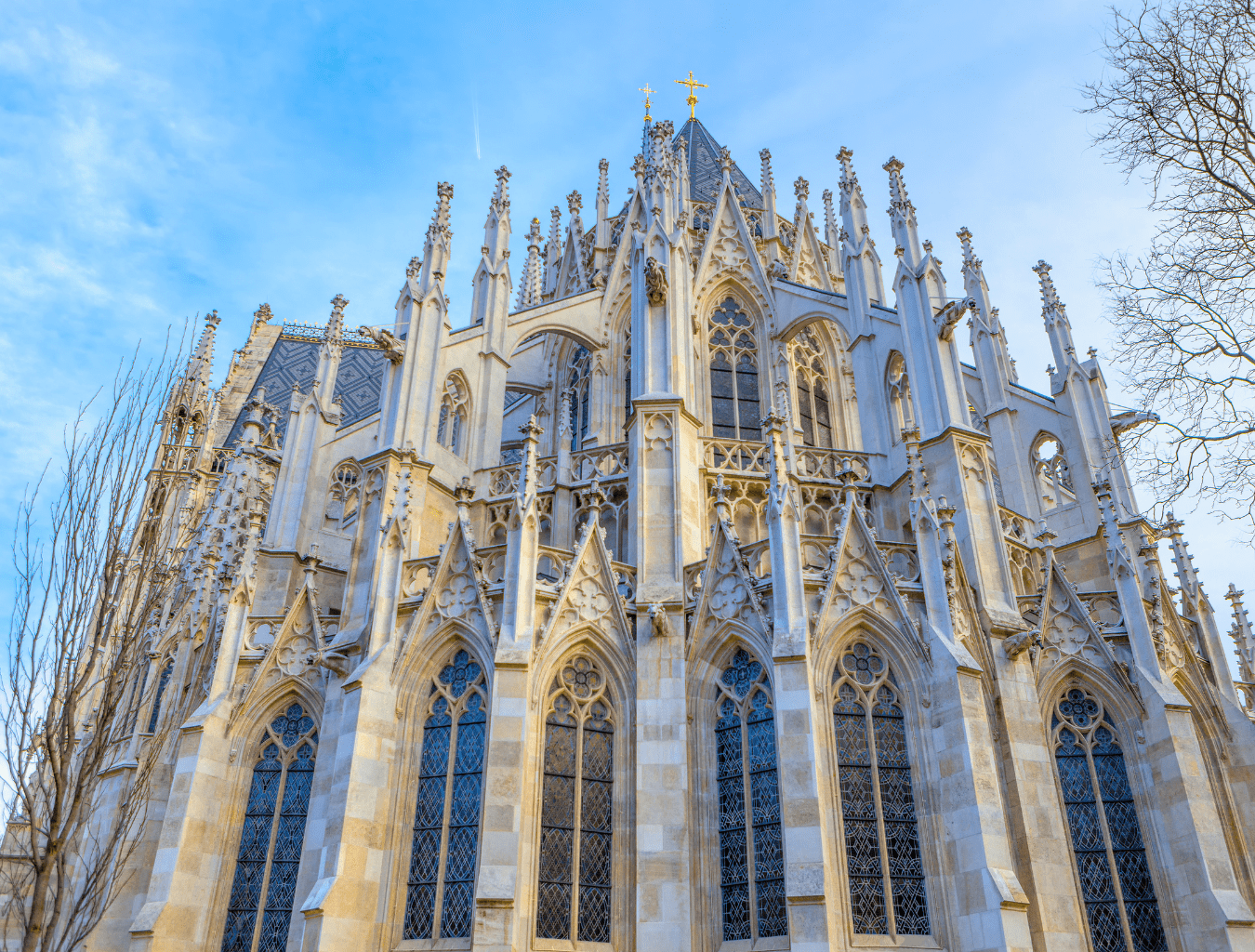The Votive Church, also known as the Votivkirche, is a magnificent neo-Gothic church located in Vienna, Austria. It is one of the city’s most prominent religious and architectural landmarks. Here’s more information about the Votive Church:
- Location: The Votive Church is situated on the Ringstrasse, a grand boulevard encircling the Innere Stadt (First District) of Vienna. It is located near the University of Vienna and close to the Rathaus (City Hall).
- History: The church was built as a votive offering, or a gesture of gratitude, following an assassination attempt on Emperor Franz Joseph I in 1853. The construction of the church commenced in 1856 and was completed in 1879.
- Architectural Style: The Votive Church was designed in the neo-Gothic architectural style, which sought to revive the grandeur and ornate detailing of medieval Gothic architecture. The church features soaring spires, intricate stone tracery, stained glass windows, and a richly decorated interior.
- Exterior: The exterior of the Votive Church is adorned with intricate stone carvings, including sculptures depicting scenes from the Bible and historical events. The twin spires rise to a height of approximately 99 meters (325 feet), making the church a prominent landmark in Vienna’s skyline.
- Interior: The interior of the Votive Church is equally impressive, with a vast nave adorned with stunning stained glass windows that flood the space with colored light. The high altar features intricate woodwork and religious sculptures, creating a sense of reverence and grandeur.
- Religious Services and Events: The Votive Church is an active Catholic church, hosting regular religious services, including Masses and other ceremonies. It is also a popular venue for weddings, concerts, and cultural events.
- Visitor Experience: Visitors are welcome to explore the Votive Church and admire its architectural and artistic beauty. Guided tours may be available to provide insights into the history and significance of the church.
The Votive Church stands as a testament to both religious devotion and architectural excellence, drawing visitors from around the world to admire its grandeur and experience its spiritual atmosphere.
